A bridge too far?
Fifteen councillors have called in a planning application for the multi-million pound bridge at Oxpens. The Special Review is on Thursday evening. We look at the arguments.

Fifteen councillors have called in a planning application for the multi-million pound bridge at Oxpens. The Special Review is on Thursday evening. We look at the arguments.
Yes, this is a story about planning committees and local development policy. Stick with us though, because that's not what it's really about. It’s about trees, and bluebells, two other bridges, helping more people to cycle, jobs vs housing and the opposition parties vs City Labour. Oh, and contrasting visions of how Oxford should develop as a city (so, just the entire existence of Oxford then… no biggie). And a human chain. Buckle up.
A note on planning: it can be an emotive subject. The entire basis of the planning system is that everything is permitted, unless the planning authority refuses it because it deems it breaks certain predefined rules. You may think it breaks the rules, but unless the planning committee deems it breaks the rules, it will get permitted. Even if the planning committee thinks it breaks the rules, on appeal, a planning inspector may think it's fine. Your neighbour wants to build an extension and you're worried about 6 months of disruption? Not (usually) a consideration. Extension overlooks you or blocks light from your windows? Yup, that is (probably) a consideration. In this instance, as an aside, the planning authority (Oxford City Council) is the same as the applicant (Oxford City Council). In practice, this is run by entirely separate teams of officers. Anyway - on with the story...
Oxford City Council’s position
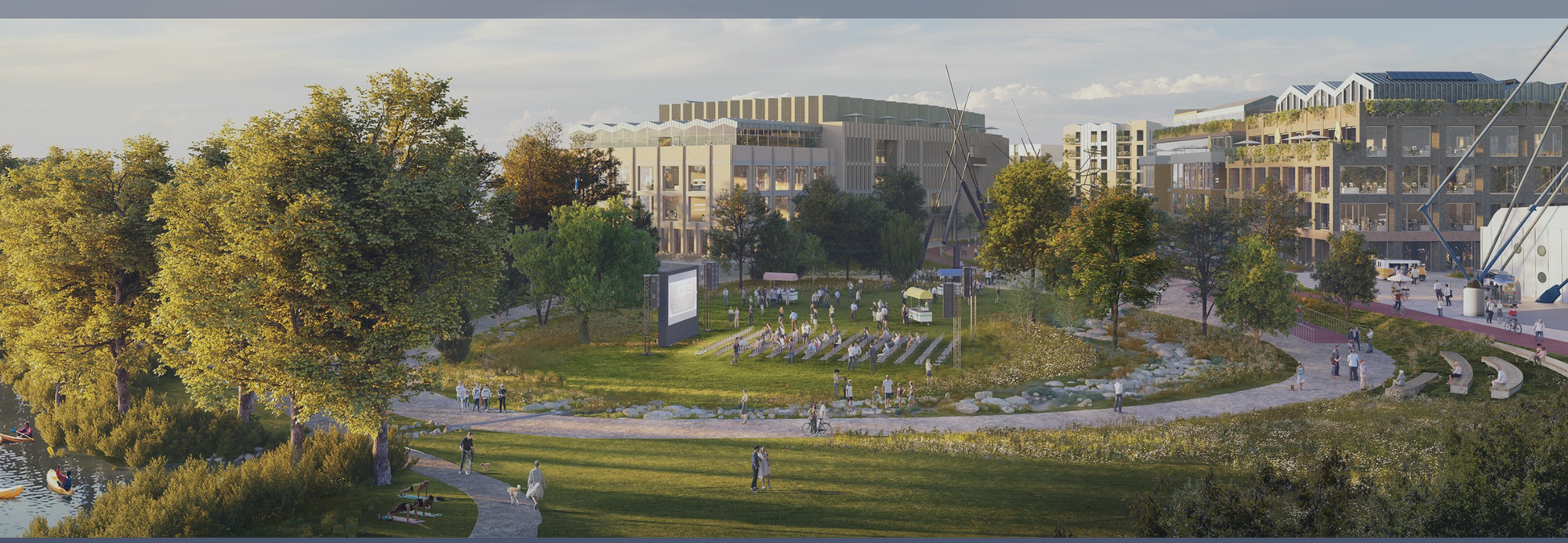
Why do we need a bridge? The picture shows the proposed Oxpens development. Situated between Oxford Train Station and Oxpens car park, it is proposed as a riverside residential, commercial and leisure quarter for Oxford, providing housing (including student and affordable housing), office and lab space, a hotel and a “public amphitheatre”. The site is largely owned by OXWED, a joint venture between Oxford City Council and Nuffield College.
Meanwhile, on the other side of the river, the University of Oxford has a long-term plan to redevelop the Osney Mead Industrial Estate, replacing low-rise industry with university buildings, denser employment and housing.
Situated in what is already a traffic pinch point (even when the Botley Road is fully open), the City Council says the bridge is needed to open up a motor traffic free route between Osney Mead and the Oxpens development, to encourage more walking and cycling.
The funding for this bridge comes from the Oxfordshire Growth Deal, £215m of housing-fuelled government investment planned to be spent county wide. This includes £60m for affordable housing and £150m for infrastructure improvements. The City Council’s budget allocated £7.2m for the Oxpens bridge, but the total cost is quoted as £10m. As with much infrastructure spending, nominally independent councils are at the mercy of central Government which hands out the funds.
This is a large-scale development. But Oxpens Meadow, which is close to the site, has been designated a Field in Trust which protects it from development. The funding for this bridge needs to be spent by March 2025, meaning the bridge must be complete by then – a tight timescale. Can these three pressures be reconciled?
What's the current situation?
In February, preparatory work for the bridge started. Trees were felled and pollarded to make space for footings for the bridge. Planning permission for the bridge had not yet been signed off: though permission isn’t required for all tree works, there would be no point in felling trees if the bridge wasn’t built.
Residents were in uproar. The council maintained the work needed to be done ahead of bird nesting season, and the trees were not protected, so went ahead.

Opposition has been vocal, with notices pinned on trees around Grandpont Nature Park, and a human chain formed around threatened trees earlier this week.
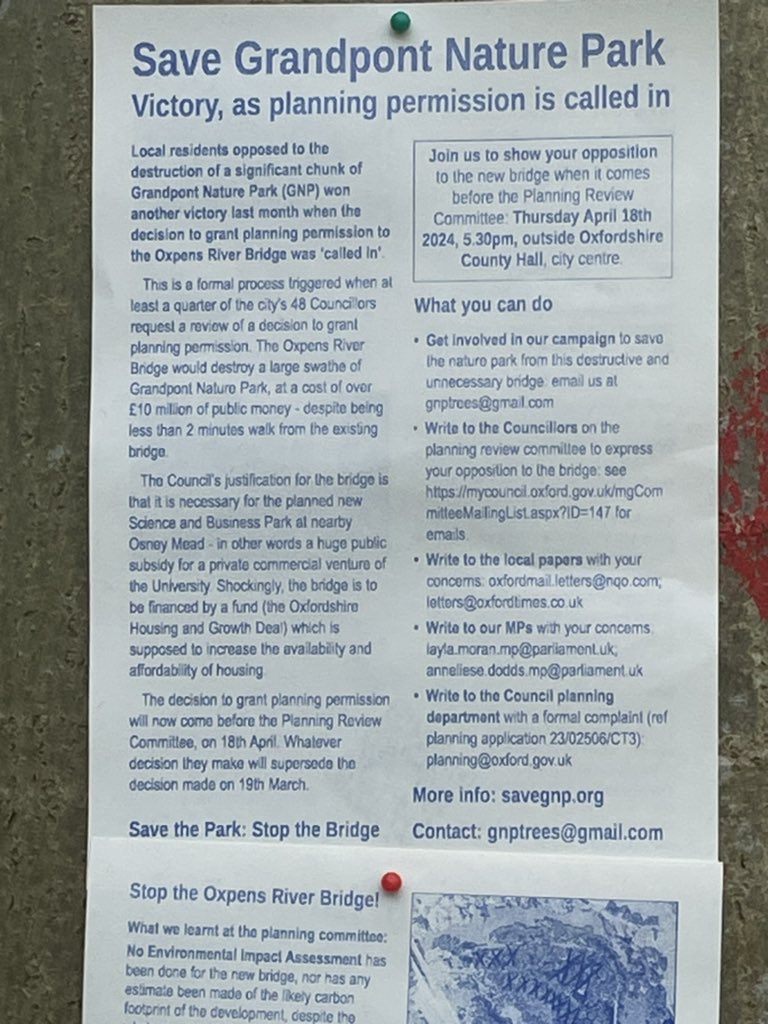
There are three main points of contention; the effect on the nature around/ environmental impact, the existence of two bridges nearby, and the Oxpens development itself. Let’s take them one at a time.
Nature and the environment
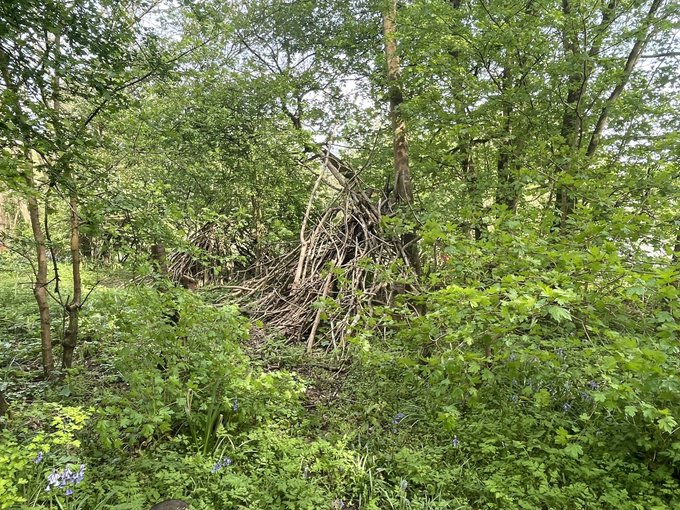
The site is undeniably beautiful. There are bluebells in spring. Locals have built tipi-like dens and children play in this riverside oasis, currently unspoiled. Yet this site is formally unprotected. The council claims that, once complete, the bridge would be sensitive to the nature around it.
As to environmental impact, opponents of the bridge point to the fact that no environmental impact assessment, nor carbon footprint assessment of the Oxpens development has been done . However - remember those planning rules? Planning rules state in this case, it wasn't necessary.
The other bridges
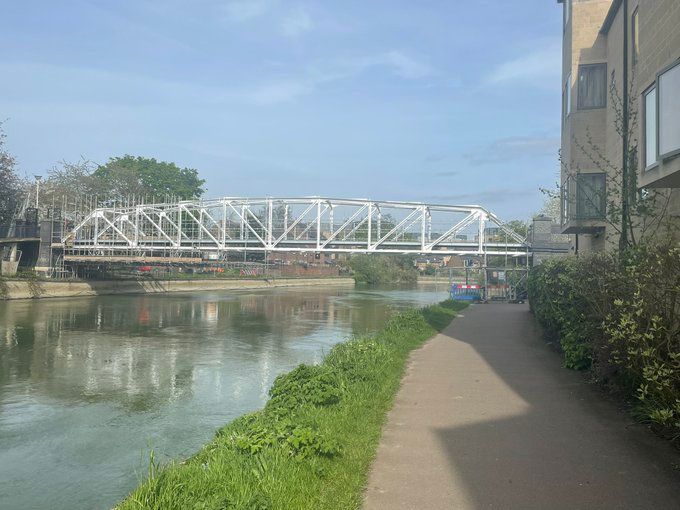
This is the Gasworks Pipe Bridge. Not far from the proposed site, and closed for repairs until this summer, it's a pedestrian bridge with a steep gradient for cycles. It relies on towpath access, so isn’t usable at times of flood. The council say it is too close to housing to be adapted to the scale needed.
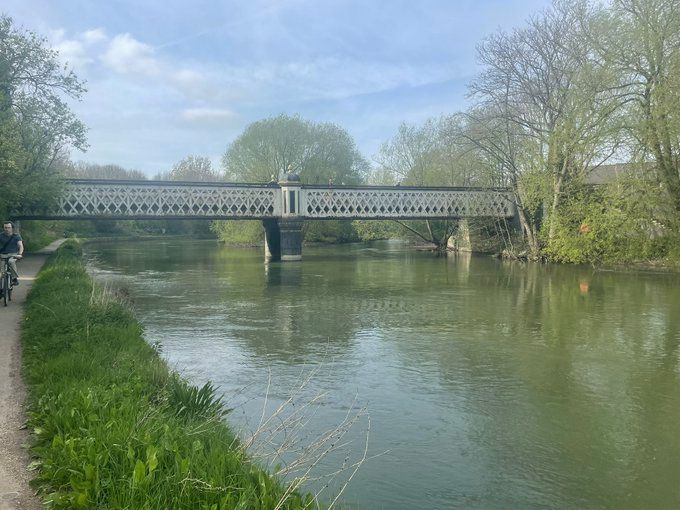
This is the other pedestrian and cycle bridge, confusingly called the Gasworks Rail Bridge after its original purpose carrying a branch railway. It is situated less than two minutes’ walk from the proposed bridge. On the north side of the bridge is Castle Mill Stream path which is currently barely suitable for shared use at current level of traffic. A path across Oxpens meadow would either not be usable in times of flood (Newsflash.Ox-FORD has... floods...!) Or if it were it would block the floodplain. Which is designed to flood. Opponents of the Oxpens bridge say the council has not costed retrofitting this bridge. The council say that it's inappropriate to cost amending this bridge due to all the above and it is not and would not be fit for purpose. Po-tay-to / po-tah-to? You decide.
The Oxpens development
Oxford has almost full employment, yet as we reported recently, not enough affordable housing for the jobs we have. The contention of the opposition is that the offices and labs in the development will create yet more housing pressure in an already overloaded city, and the site should be used for housing. However, if the site were used for housing, what bridge would the occupants of that (presumably considerable expanse of) housing use?
Lois Muddiman, Green Party councillor for Osney and St Thomas, told the Oxford Clarion she had several reasons to object – though she said “over 95% of my travel in Oxford is as a cyclist or a pedestrian, so it may seem strange that I am objecting!”.
She cited the existing bridges and the “destruction of a city oasis… a natural amenity for local residents”. She said that connecting cycle routes would be impassable at times of flood, and that the bridge works would actually make towpath flooding more likely. But she also had wider environmental concerns.
There has been no environmental impact assessment carried out for the proposed bridge, nor has any estimate been made of the likely carbon footprint of the Osney Mead development. With some creative thinking the current bridge, no more than a two minute walk from the proposed bridge, can be adapted without destroying the oasis that is Grandpont Nature Park and thereby satisfying all needs and wants. This seems to have been too quickly discounted. No costings have been shown for improving the existing bridge, despite best practice in construction being to refit and improve rather than build new.
She also said that, as the university’s Osney Mead development would benefit most, the university – not the public purse – should pay for any new bridge:
Oxford City Council says the proposed bridge is “critical“ for the planned development of Osney Mead Industrial Estate by Oxford University. Its primary purpose is to link Oxford University’s planned new campus on Osney Mead to the city centre. Oxford University should be paying for a bridge in this location, not the taxpayer. It would be a much better use of public money to build a new bridge elsewhere, perhaps between Folly Bridge and Donnington Bridge, which could allow many cyclists in East Oxford to avoid the Plain Roundabout.
The Liberal Democrats have also expressed reservations about the Oxpens development. Neil Fawcett, a member of the County Council cabinet, said that it would “make the city's housing pressure worse… they should build homes on it and help improve the situation instead”.
The meeting is set for Thursday evening. Local residents are planning a protest outside. A quarter of the councillors on the council have formally called it in for scrutiny – Greens, Lib Dems and independents. Expect debate; this one goes to the heart of what each of the parties stand for.
